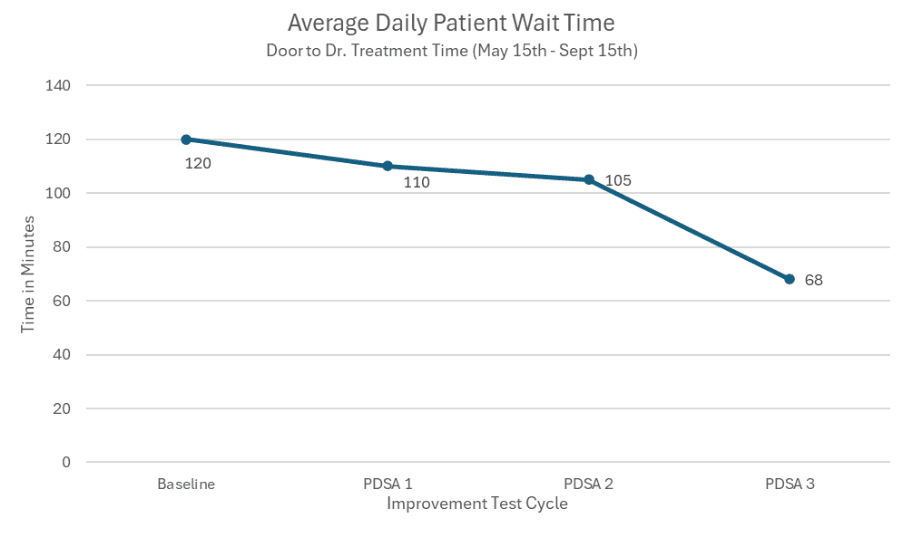Comprehensive provincial health system undergoing full scale transformation
This public healthcare system undertook a multi-year transformation plan in 2 phases. The first phase was successful in ensuring everyone that was considered part of the vulnerable population was fully accessed, primary care physicians were trained in Advanced Clinical Access which reduced wait times and increased panel sizes, home care was ready for patients before they left the hospital and long-term care was able to alleviate unwanted hospital admissions. The second phase focused on reducing the demand in hospitals and emergency rooms and patient wait times by improving all acute care services and access.
The current state in the Emergency Department for CTAS ‘3’ (Canadian Triage and Acuity Scale), wait times were upwards of two to six hours. The national standard for CTAS ‘3’ is – Patients need to be seen by a physician within 30 minutes, 90% of the time.
Our implementation team first moved to improving flow through the emergency department, focusing on CTAS ‘3’ patients. The stretch goal of this first emergency room project was to try and cut the current wait times in half. The emergency department (ED) team was selected and brought together to create a problem statement, develop current state process maps and measurement plans. As the ED team brainstormed the problem statement, they believed that patients coming to the ED felt they were significantly worse than the nurses had triaged them as.
We recognized the ED team could not move ahead until their hypothesis was proven either correct or not. Together we created a survey for patients to rate themselves based on the level of care they felt they required. The survey was created by the team and given to patients as they came into the ED over a two-week period.
Working together with the ED team we identified, analyzed, and prioritized pain points, created solutions, tested, and adjusted them until we were able to realize the value that led to achieving our objectives. Solutions that we collectively agreed to were implemented and have been sustained since. They included:
